Achievements and Announcements
ACHIEVEMENTS
- ARC Linkage funding for hazardous substance storage and urban innovation research
- Scientist of the Year awarded $2.9m to help six million Australians
- UniSA mathematics student wins Defence Women in STEM scholarship
- Australia on target to bring laser technology up to speed
- UniSA in the running for Australian Defence Industry Award
- Two UniSA researchers join prestigious mentorship program
- Allied health lecturer receives international recognition for innovation in online teaching
- UniSA scientists take out Tall Poppy Awards
- Five UniSA staff named in top 50 advertising researchers
- UniSA lecturer Susannah Emery helps develop climate change game
- Recognising excellence in child protection research in helping our most vulnerable
APPOINTMENTS
ANNOUNCEMENTS
ACHIEVEMENTS
ARC Linkage funding for hazardous substance storage and urban innovation research
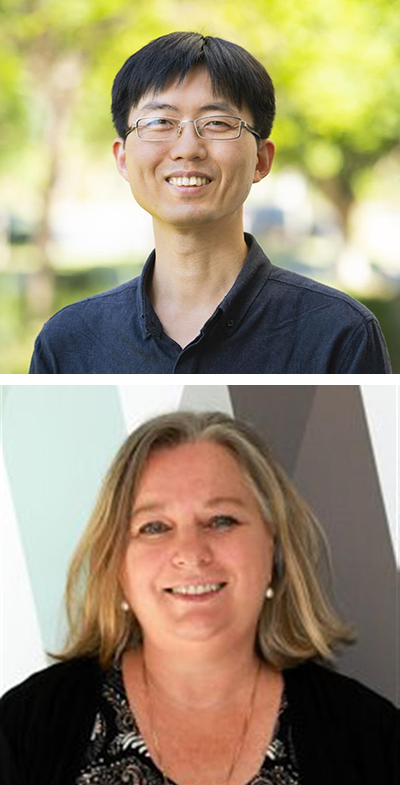
Two research projects led by UniSA have been awarded a total of more than $700,000 in the latest round of Australian Research Council (ARC) Linkage Project funding.
Both projects will run over three years and see UniSA researchers collaborate extensively with industry and community stakeholders. Dr Gun Lee, from UniSA’s Australian Research Centre for Interactive and Virtual Environments, will lead research to improve the inspection of metallic oil and chemical tanks using mixed reality technology, while Dr Helen Barrie, from UniSA’s The Australian Alliance for Social Enterprise, will lead a project exploring the social benefit of building mixed-use vertical communities in Australian cities.
With ARC funding of $480,234, Dr Lee’s team will partner with asset integrity firm NDE Solutions to develop more efficient methods for monitoring the safety of storage for hazardous substances.
“Metallic pressure vessels, tanks and piping house some of the most dangerous chemicals, which erode the internal structure of the storage asset over time,” Dr Lee says.
“Currently, NDE Solutions uses remote-controlled robots to scan the internal structure of metallic assets, and this data is then analysed and plotted onto 3D models exhibiting tank and vessel integrity.
“This project will develop technology giving local tank inspectors and remote engineers the ability to remotely collaborate through seeing virtual scans overlaid onto physical assets as robots inspect them.”
NDE Solutions director Kimal Singh says there is a strong push in the resources sector to move as many personnel as possible from the field into safer, city-based working environments, and providing engineers with the ability to remotely assess the integrity of their assets will assist that transition.
“Having an augmented reality system where engineers can plug into a field-based technician’s helmet camera and make changes to their heads-up display would be of significant value to the industry and a step forward in the modern industrial revolution,” Singh says.
In a $287,994-funded project led by Dr Barrie, UniSA researchers will partner with Uniting Communities and the Australian Institute of Architects SA for a case study of the innovative mixed-use UCity building in Adelaide.
“In an increasingly urbanised world, cities must meet the needs of disparate and often vulnerable communities – denser, increasingly diverse urban populations require serious consideration about how to create resilient neighbourhoods and thriving communities,” Dr Barrie says.
“This project will address market opportunities for innovative, vertical urban communities, that include alternative forms of housing for vulnerable population groups; supportive, sustainable environments and built design; and co-location of social services, social opportunities and commercial businesses.
“The development of new social values tools and good-practice guides for Australia will provide benefits to industry and community alike by providing socially and environmentally appropriate housing for diverse end-user groups.”
Scientist of the Year awarded $2.9m to help six million Australians
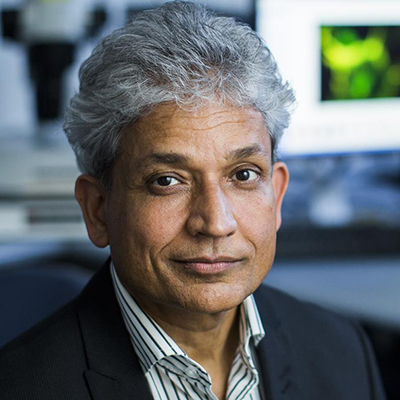
South Australian Scientist of the Year, UniSA Professor Sharad Kumar, has been awarded $2.9 million to help improve the lives of about six million Australians.
That’s the number of people collectively diagnosed with heart disease, cancer and chronic kidney disease each year, 100,000 of whom will lose their health battle by year’s end.
Prof Kumar AO will use the National Health and Medical Research Council (NHMRC) Federal Government funding to lead a five-year project to help prevent these diseases and others, as well as developing new treatments for them.
His team at UniSA and SA Pathology’s Centre for Cancer Biology has made significant progress in recent years to understand the role that specific cells play in serious health conditions, and this grant will continue that work.
The project will focus on the biochemical processes of a protein called ubiquitin to regulate the body and why it breaks down sometimes, leading to a range of diseases.
UniSA mathematics student wins Defence Women in STEM scholarship
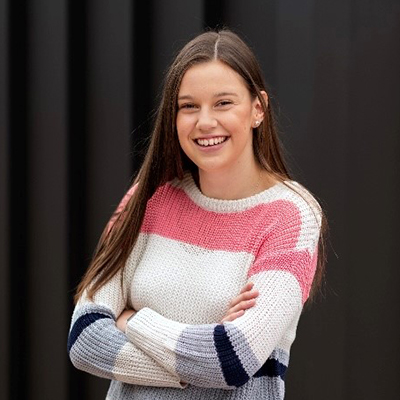
UniSA Bachelor of Mathematics (Industrial and Applied Mathematics) student Jessica Stafford has been awarded a Defence Women in STEM Undergraduate Scholarship in the latest round of the prestigious federal program.
Sponsored by the Defence Science and Technology Group, the scholarships are awarded to students who demonstrate academic excellence and positive attributes such as community leadership and extra-curricular engagement.
Recipients receive $10,000 per year for two years, along with opportunities for industry placement and mentorship. Stafford says the scholarship will provide an important boost to her studies and the potential career pathways available to her.
“I was incredibly surprised but thrilled when I found out I was successful in winning the scholarship,” Stafford says.
“The placement that is a part of the scholarship will allow me to experience working in the industry, and it will open up many different opportunities for the future, which I am very excited for.”
UniSA enjoys a strong relationship with the Australian defence industry.
Defence Industry Minister Melissa Price says the sector has a central role in providing STEM careers for women.
“These scholarships are helping facilitate greater engagement from women across Australia with defence, enabling the best talent to successfully complete their degrees and ensuring the workforce of the future is secured,” Price says.
Australia on target to bring laser technology up to speed
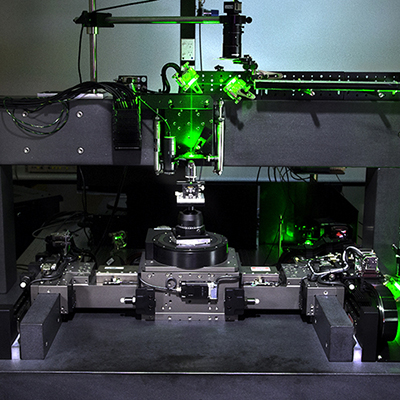 State-of-the-art laser based device manufacturing facility developed at UniSA
State-of-the-art laser based device manufacturing facility developed at UniSAUniSA has been awarded a $1.8 million Federal Government contract to develop technology that underpins the next generation of high-powered lasers in Australia for the defence and manufacturing sectors.
UniSA Professor of Laser Engineering David Lancaster will lead the three-year project, funded by the Defence Science and Technology Group (DSTG), in collaboration with the University of Adelaide.
Prof Lancaster, who heads one of the country’s leading laser and photonics manufacturing research laboratories at UniSA, will use the funding to help build sovereign manufacturing capability, bringing Australia up to speed with other developed nations.
“High-powered lasers are increasingly being used in defence and manufacturing, but despite a long history of developing lasers in Australia, our technology is still relatively immature compared to other countries,” he says.
“There is a substantial gap between the research outputs and the needs of our defence industry, so Australia has had to buy this technology from other countries, which is quite restrictive because most nations severely limit their exports of lasers.”
Over the next three years, Prof Lancaster aims to build a new type of high-powered laser that combines multiple smaller lasers, fine tuning the manufacturing process so it is cheaper and more efficient.
“In the past, I have worked on lasers that take years to build and cost millions of dollars. I think it’s more important to put years of effort to develop the technology and manufacturing processes to build many miniature and safer lasers which cost hundreds of dollars each. That is our aim.”
UniSA’s Laser Physics and Photonics Devices Lab will manufacture the lasers and the University of Adelaide’s Institute for Photonics and Advanced Sensors will develop the specialist laser glass.
“The reason that UniSA and the University of Adelaide have been selected for this project is that our miniature laser technology and manufacturing processes are world leading and will supercharge the DSTG’s laser system program,” Prof Lancaster says.
The Federal Government’s Next Generation Technologies Fund, managed by DST, was established in 2016 to link research and technology with the future needs of Australia’s defence industry.
UniSA in the running for Australian Defence Industry Award
UniSA has been shortlisted in the 2021 Australian Defence Industry Awards for Academic Institution of the Year.
The awards, run by industry publication Defence Connect, recognise the contributions of people, institutions and businesses to Australia’s diverse defence industry, and this shortlisting reflects both UniSA’s work in defence research and the high calibre of UniSA graduates working in Australia’s defence sector.
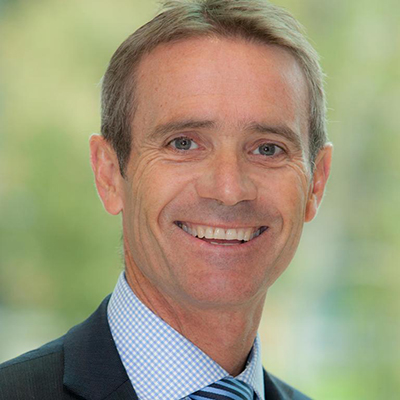
UniSA’s Director: Defence and Space Matt Opie says the nomination is a reflection of the hard work the University has put in over many years to foster strong relationships with the defence industry.
“UniSA has a proud history of supporting Australia’s defence organisations through our world class research and world class graduates right across our 30 years,” Opie says.
“As one of Australia’s leading defence research universities, UniSA is proud to be a finalist in the 2021 Australian Defence Industry Awards.”
Winners will be announced during a ceremony at the National Convention Centre, Canberra, on Tuesday 7 December.
Two UniSA researchers join prestigious mentorship program
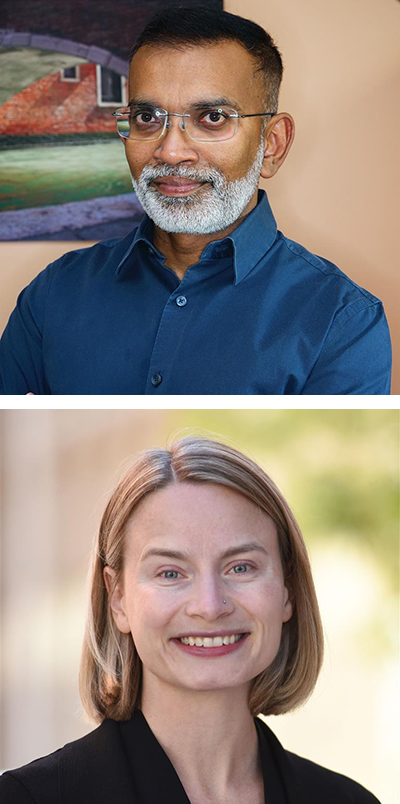
Professor Michael Samuel and Associate Professor Tasha Stanton are two of only eight researchers nationwide to be selected as new Associate Members in the Australian Academy of Health and Medical Sciences’ latest mentorship program round.
With two competitive intakes each year, the mentorship program invites rising research and leadership stars to become mentees for three years, working alongside Academy Fellows to contribute to the academy’s policy projects, events and programs.
Clinical pain neuroscientist Assoc Prof Stanton, the Osteoarthritis Research Theme Lead for IIMPACT in Health at UniSA, says she is looking forward to becoming part of the academy and the learning experiences the mentorship program will provide.
“As a mid-career researcher, this opportunity to pick the brain of an established Australian research leader, and to receive individualised mentorship and feedback, is frankly unparalleled,” she says.
Prof Samuel, a cancer biologist heading the Tumour Microenvironment Laboratory at the Centre for Cancer Biology, is equally excited about the opportunity.
“I am delighted to have been selected to join the Australian Academy of Health and Medical Sciences as an Associate Member and for the chance to benefit from the wisdom and advice of my mentor,” he says.
“I look forward to contributing to the life of the academy over the next three years as it continues to be an impartial voice of health and medical sciences in this country.”
The Australian Academy of Health and Medical Sciences aims to advance health and medical research in Australia and its translation into benefits for all. For more information on the Academy and its mentorship program, visit the academy website.
Allied health lecturer receives international recognition for innovation in online teaching
A UniSA allied health lecturer has received an international award for excellence and innovation in online teaching.

Medical sonography lecturer Sandy Maranna has been recognised by the US-based Online Learning Consortium through its Awards for Excellence in Online Teaching, Research and Leadership.
The consortium selected Maranna as the recipient of its 2021 Excellence and Innovation in Online Teaching Award. The award recognises outstanding and creative use of appropriate educational technologies to teach an online and/or blended course in higher education.
Maranna was acknowledged for her innovative approaches to digital assessments, which she has implemented over the past five years in medical sonography courses dealing with women’s health.
“The fact that this award was adjudicated by Karen Swan, Professor in Educational Research and one of the gurus in advancing online learning for the past 20 years, is humbling, and motivates me to do more in this space,” Maranna says.
The awards committee commended Maranna’s exemplary contributions to the field through authentic assessments that elevated the OLC community's efforts in advancing quality online and blended learning experiences designed to reach all learners.
The OLC is a collaborative community of higher education leaders and innovators, dedicated to advancing quality digital teaching and learning experiences designed to reach and engage the modern learner – anyone, anywhere, anytime.
Maranna will be recognised for her achievement during gala presentations as part of the upcoming OLC Accelerate 2021 conference, which includes both virtual and face-to-face versions. The OLC has invited her to be on a discussion panel at the awards gala and to discuss her initiative and its implementation and challenges in a webinar with the OLC community.
Maranna also wanted to acknowledge the contributions of her students and UniSA mentors “who have helped me grow as an educator … and special mention to Gavin Sanderson, who introduced me to the Consortium in 2018”.
UniSA scientists take out Tall Poppy Awards
The work of a UniSA lecturers to improve student success through data; and of another in stroke recovery; have been recognised through the Young Tall Poppy Science Awards.
The annual Young Tall Poppy Science Awards – an initiative of the Australian Institute of Policy and Science – recognise achievement in the sciences and helps to communicate the passion and purpose of Australia's finest scientists.
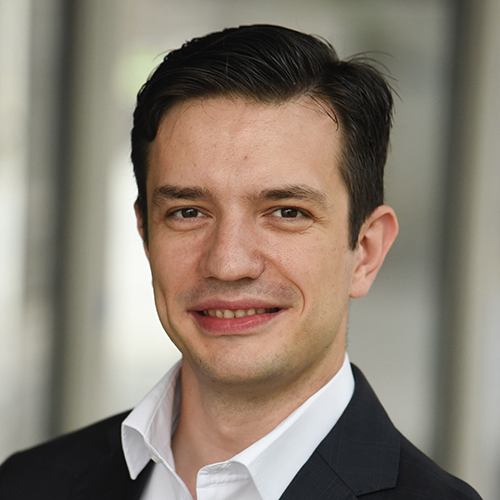
UniSA senior lecturer Dr Vitomir Kovanović received a Young Tall Poppy Science Award for his innovative use of data science and machine learning to improve teaching and learning in Australian schools.
Based in the Centre for Change and Complexity in Learning (C3L), Dr Kovanović research focuses on developing novel learning analytics systems that use student-generated data and learning management systems to provide important insights for student learning.
Supported by the Thyne Reid Foundation, he is currently leading a research study to create individual learner profiles at several local South Australian schools.
"Our goal is to help schools better use available data to improve student success and wellbeing," Dr Kovanovic says.
"By working with teachers, we hope to develop new tools that will help them quickly and easily identify children who need additional support and guidance.”
State-of-the-art stroke therapies see UniSA scientist take out Tall Poppy
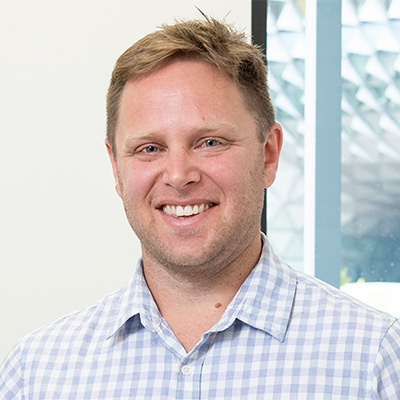
UniSA senior lecturer in physiotherapy Dr Brenton Hordacre won a South Australian Young Tall Poppy award for his significant work in stroke recovery.
Dr Hordacre discovered that early stroke recovery is underpinned by a very brief, spontaneous increase in neuroplasticity – the ability of the brain to re-wire itself and form new connections.
Dr Hordacre currently investigates, tests, and translates innovative solutions to reopen a period of enhanced neuroplasticity for stroke patients to enable greater recovery from stroke.
He uses a range of therapeutic rehabilitation technologies and has expertise in state-of-the-art tools to investigate the human brain including non-invasive brain stimulation, magnetic resonance imaging, and electroencephalography.
The winner of the Tall Poppy of the Year award will be announced on 15 November 2021
Five UniSA staff named in top 50 advertising researchers
A study of the world’s top academic journals focused on advertising has named five UniSA staff in the top 50 researchers publishing in the field and placed UniSA as number two in the world.
The paper A decade (2008–2019) of advertising research productivity: A bibliometric review, examines academic journals focused on advertising as a benchmark for advertising research.
Data for the study was based on three major US-based advertising journals – the Journal of Advertising, the Journal of Advertising Research and the Journal of Current Issues and Research in Advertising, from 2008 to 2019. Only full-length articles were considered for analysis.
The comparative author ranking looked at the number of times a researcher appears as an author in the journals.
Five UniSA researchers from the Ehrenberg-Bass Institute for Marketing Science are named in the top 50: Professor Steve Bellman #4; Professor Byron Sharp #7; Professor Rachel Kennedy #11; Professor Jenni Romaniuk #32; and Dr Virginia Beal #47.
Institutions were ranked on a similar basis, with UniSA number two in the absolute rank of academic institutions with 43 affiliated articles after the University of Georgia, which had 49.
The study was published in the Journal of Business Research.
UniSA lecturer Susannah Emery helps develop climate change game
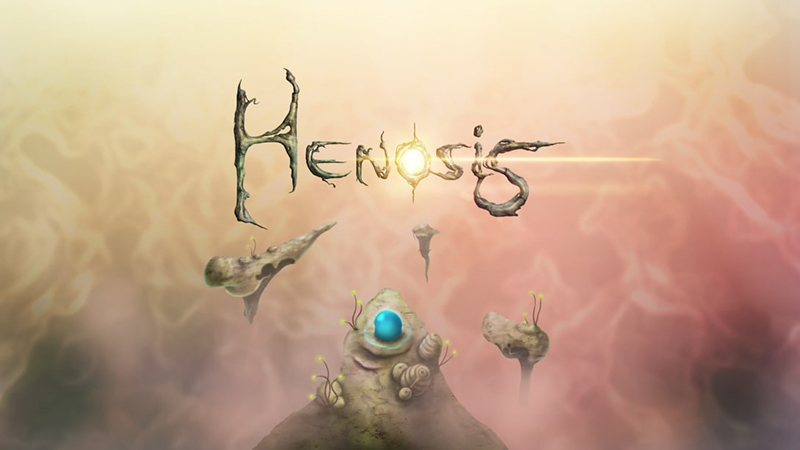 Henosis Game Art. Image courtesy of Nintendo.com
Henosis Game Art. Image courtesy of Nintendo.com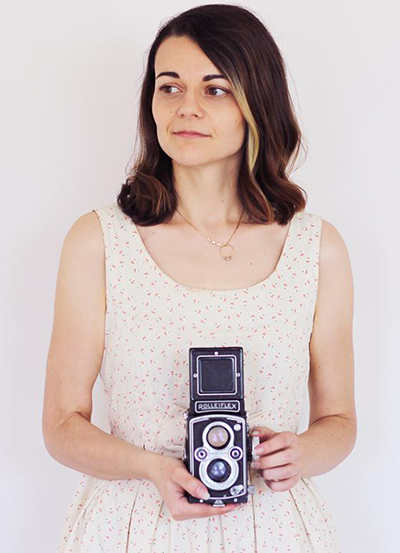
UniSA lecturer Susannah Emery has helped design a 2D platform puzzler game, Henosis, which has been made available for Nintendo Switch and PC.
Emery is currently completing her PhD in game design at Curtin University and worked with the team at Odd Critter Games and Beer Labs team to develop the game.
Emery's research interests focus on video games and digital media for education and social change, with her contribution to Henosis exploring climate change.
“It’s very exciting to have Henosis available on the Nintendo Switch,” Emery says. “Whilst the games I make are usually smaller, more experimental style games, Henosis gave me an opportunity to work with a great team to explore how some of the concepts and ideas I explore through my research into games for education and social change in a format with a much larger reach.”
Players of Henosis are propelled into weird and visceral worlds as they take control of a small droplet of water to replenish the land, while overcoming obstacles and enemies throughout each level.
“The thing that I really wanted to contribute to the game was the narrative around climate change and using the mechanics and game design as a metaphor to communicate the potential impact of climate change on human society,” she says.
“The project lead and artist on Henosis game took inspiration from the philosophical writings of Platoism, where 'Henosis' is derived from – it’s the idea of ‘oneness’ or ‘unity’ – basically saying we are all in this together, which again plays back into that idea of humans and climate change and the impact that this has on us as a species, and on the world.”
Emery hopes to continue her relationship with Odd Critter Games and Beer Labs to explore the creation of more games that can educate and/or promote social and society issues.
She is also committed to promoting diversity in the games industry and is an International Women in Games Ambassador. As an ambassador she helps to support and encourage women and girls in understanding the games industry and the opportunities there are within it.
Emery’s game Hannah: A friend in Need (an interactive narrative game aimed to strengthen support networks for those experiencing domestic violence) was named as a finalist in the 2021 James Paul Gee international learning games awards.
Hannah was named alongside some of the world’s best learning games, recognising the hard work that has gone into the development of the game.
You can also find another of Emery’s games, Trains of Thought, online, as part of the MOD. exhibition Up Close.
Recognising excellence in child protection research in helping our most vulnerable
The Australian Centre for Child Protection (ACCP) at UniSA has been recognised for its leadership in child protection research across Australia and for supporting the design of evidence-based services.
Announced as part of the inaugural South Australian Child Protection Awards, the Award for Excellence in Child Protection Research recognises the importance of child protection research in improving the lives of vulnerable children and their families.
The award ceremony was held during National Child Protection Week, which aims to engage and educate all Australians to understand they have a part to play in keeping children and young people safe from violence, abuse and neglect.
ACCP director Professor Leah Bromfield says the award recognises the ACCP’s leading approach and the innovation of its research and the difference it has and is making for children affected by abuse and neglect.
“At the ACCP we recognise that research on its own does not change lives, people do,” Prof Bromfield says. “The ACCP strives to work with partners across policy and practice, parents, carers and children to develop and implement the most responsive solutions.
“This week is focused on spreading the message that to treat all of Australia’s children fairly, we need to make sure every family and community has what children need to thrive and be healthy.”
She says improving outcomes for children, families and communities is at the heart of their approach.
Deputy Vice Chancellor: Research and Enterprise Professor Marnie Hughes-Warrington says the award recognises where innovative and leading work is being undertaken in child protection.
“ACCP’s national and partnered approach to research means its outcomes can be applied in practical and impactful ways, working together with policy makers and practitioners,” Prof Hughes-Warrington says.
“This is driving new approaches and outcomes in child protection, continuing to shape the Australian policy and practice landscape in this critical field.”
APPOINTMENTS
EOS establishes Professorial Chair in Laser Physics at UniSA
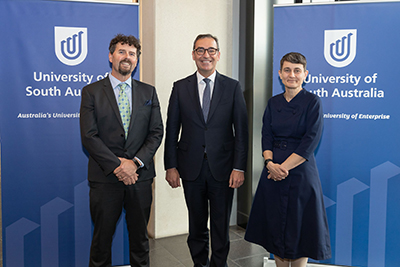 Professor David Lancaster, Premier Steven Marshall and UniSA Deputy Vice Chancellor: Research and Enterprise Professor Marnie Hughes-Warrington.
Professor David Lancaster, Premier Steven Marshall and UniSA Deputy Vice Chancellor: Research and Enterprise Professor Marnie Hughes-Warrington.A new Professorial Chair in Laser Physics has been established at UniSA through a partnership with Australian technology company Electro Optic Systems Pty Ltd (EOS).
The new EOS Professorial Chair in Laser Physics will create two postdoctoral positions and establish a world leading research and teaching group in areas closely aligned to core EOS capabilities in space domain awareness used to track, classify and characterise objects in space.
UniSA Deputy Vice Chancellor: Research and Enterprise Professor Marnie Hughes-Warrington says the partnership will contribute to Australia’s sovereign capability.UniSA’s Professor David Lancaster was announced as the chair at an event held in September.
“This is a fantastic opportunity to partner with the biggest Australian-owned defence company to work on technology that has application and need in Australia,” she says.
EOS group CEO Dr Ben Greene says the establishment of the EOS Chair in Laser Physics is the next step in a long-term program of EOS engaging with leading Australian universities to foster collaborations between industry and the tertiary sector in the country.
“We are very pleased to be engaged with the University of South Australia to help build on the excellence in laser physics that the University has grown over the last 20 years,” Dr Greene says. “The University is well known for its contribution to advanced technology industry areas such as communications, computing and quantum technologies and we’re happy to build on that through this partnership.”
EOS Professorial Chair in Laser Physics Professor David Lancaster says he’s honoured to be taking up the position.
“Laser physics is of critical strategic importance for Australia,” Prof Lancaster says. “Doing research in collaboration with industry is something I’ve been advocating for a long time. It really adds an edge to my research.”
EOS has contributed significantly to STEM academia directly funding $20 million in Commonwealth-sponsored research over the past five years and continues to invest in STEM initiatives.
ANNOUNCEMENTS
Agreement with Babcock Australasia to develop new tech for Australian Army
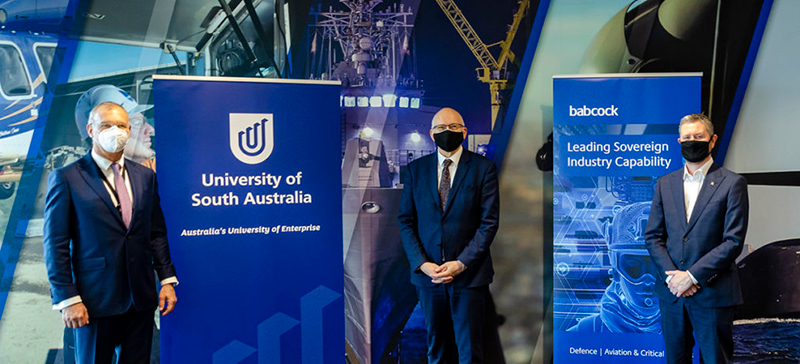 Babcock Australasia’s Chief Executive Officer David Ruff (left), Innovation and Skills Minister David Pisoni and UniSA Vice Chancellor Professor David Lloyd at the signing of the MoU at Babcock’s Regional Support Centre.
Babcock Australasia’s Chief Executive Officer David Ruff (left), Innovation and Skills Minister David Pisoni and UniSA Vice Chancellor Professor David Lloyd at the signing of the MoU at Babcock’s Regional Support Centre.UniSA has signed a Memorandum of Understanding (MoU) with global aerospace and defence company Babcock Australasia to develop ‘best of breed’ technology to be used by the Australian Army.
The agreement relates to a project, LAND125 Phase 4, to provide Australian soldiers with the best products, systems and emerging technology so they can defend the nation armed with the latest, disruptive advances in modern warfare.
The signing of the MoU follows the announcement that Babcock has been down-selected for the next stage of LAND125 Phase 4.
The MoU will open up avenues for Babcock and UniSA to collaborate on technology development, postgraduate research, and graduate pipelines.
Babcock Australasia CEO David Ruff and UniSA Vice Chancellor Professor David Lloyd signed the MoU in Adelaide.
Babcock Australasia’s Head of Business Development Mick Burgess says the MoU is part of the company’s ongoing commitment to delivering Australian Industry Capability (AIC).
“Babcock’s partnership with UniSA strengthens our commitment to research and development being conducted in Australia in areas that will generate the best outcome for defence,” Burgess says.
“As a result of the MoU, Babcock will able to leverage key research being undertaken by UniSA for LAND125 Phase 4 in the areas of human factors, cognitive and systems neuroscience, interactive and virtual environments, and advances in wearable computing and displays.
“These and other research areas will contribute strongly to the spiral development of technologies and their use by the future Australian soldier.”
UniSA Director of Defence and Space Matt Opie says the University’s number one ranking in Australia for industry engagement reflects its end-user focused approach to its research.
“In this case, the research we are undertaking in neuroscience, wearable computers, virtual and interactive technology, and the human factors involved in defence, will all help develop the ideal systems for Australian soldiers,” Opie says.
“This partnership is an excellent example of how UniSA works closely with the defence industry to meet its needs, help solve the challenges it faces, and deliver tangible and practical outcomes.”
LAND125 Phase 4 will provide Australian soldiers with the best products, systems and emerging technology so they can defend the nation armed with the latest, disruptive advances in modern warfare.
The project will deliver an Integrated Soldier System integrating all elements and subsystems that are used, worn or carried by soldiers in any operational context or environment for up to 72 hours without resupply.
Headquartered in Adelaide, Babcock has a longstanding commitment to maximising local industry participation, supporting local research and development (R&D), and contributing to South Australian innovation across its Defence, Aviation and Critical Services operations.
Other Stories
- Accenture and UniSA join forces to develop the digital business skills of tomorrow
- New ‘Goldilocks calculator’ could be key to ensuring children’s health
- Pioneering tech enables monitoring of a baby’s vital signs without contact
- Three minute thesis winner to make ovarian cancer treatment more effective
- From the Vice Chancellor
- Achievements and Announcements
- Olympic medal hopes for sonography student prove ‘ultra sound’
- UniSA launches guide to foster respectful engagement with Aboriginal Peoples
- Video: Innocent or guilty? Virtual reality gives us the verdict
- Meet the UniSA student who’s risen to footballing fame with the Crows
- The latest books from UniSA researchers
- In Pictures: Purkarninthi in Residence art installation launch and 2021 Art on Campus Exhibition




